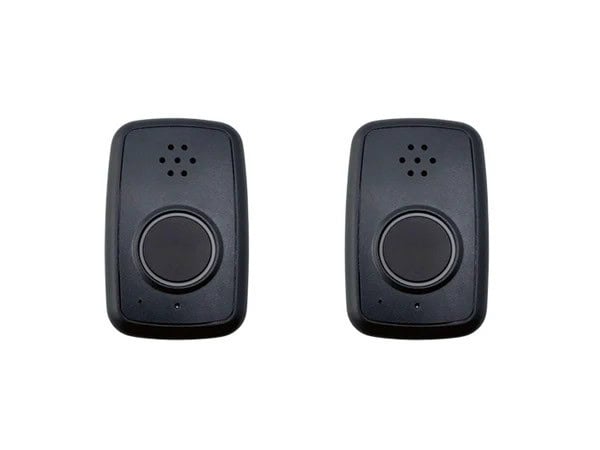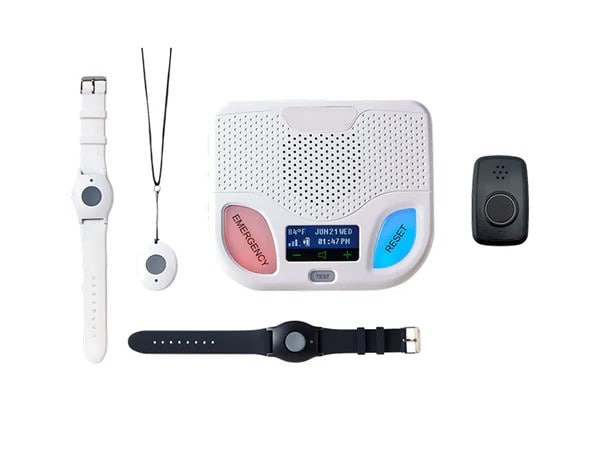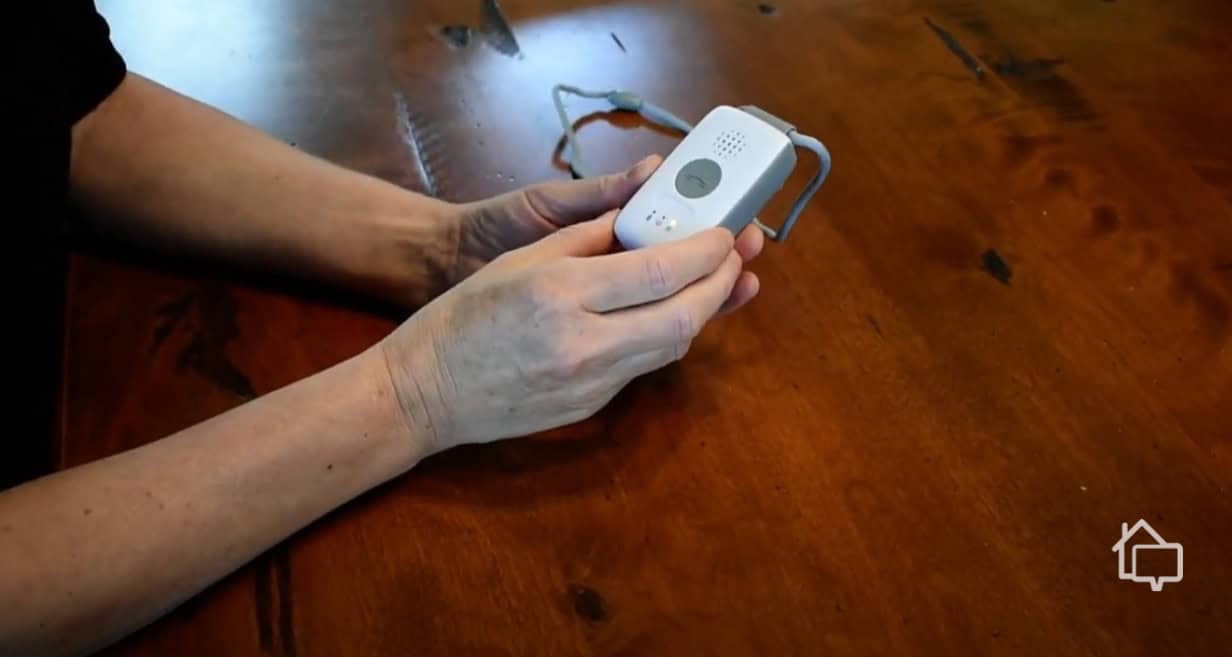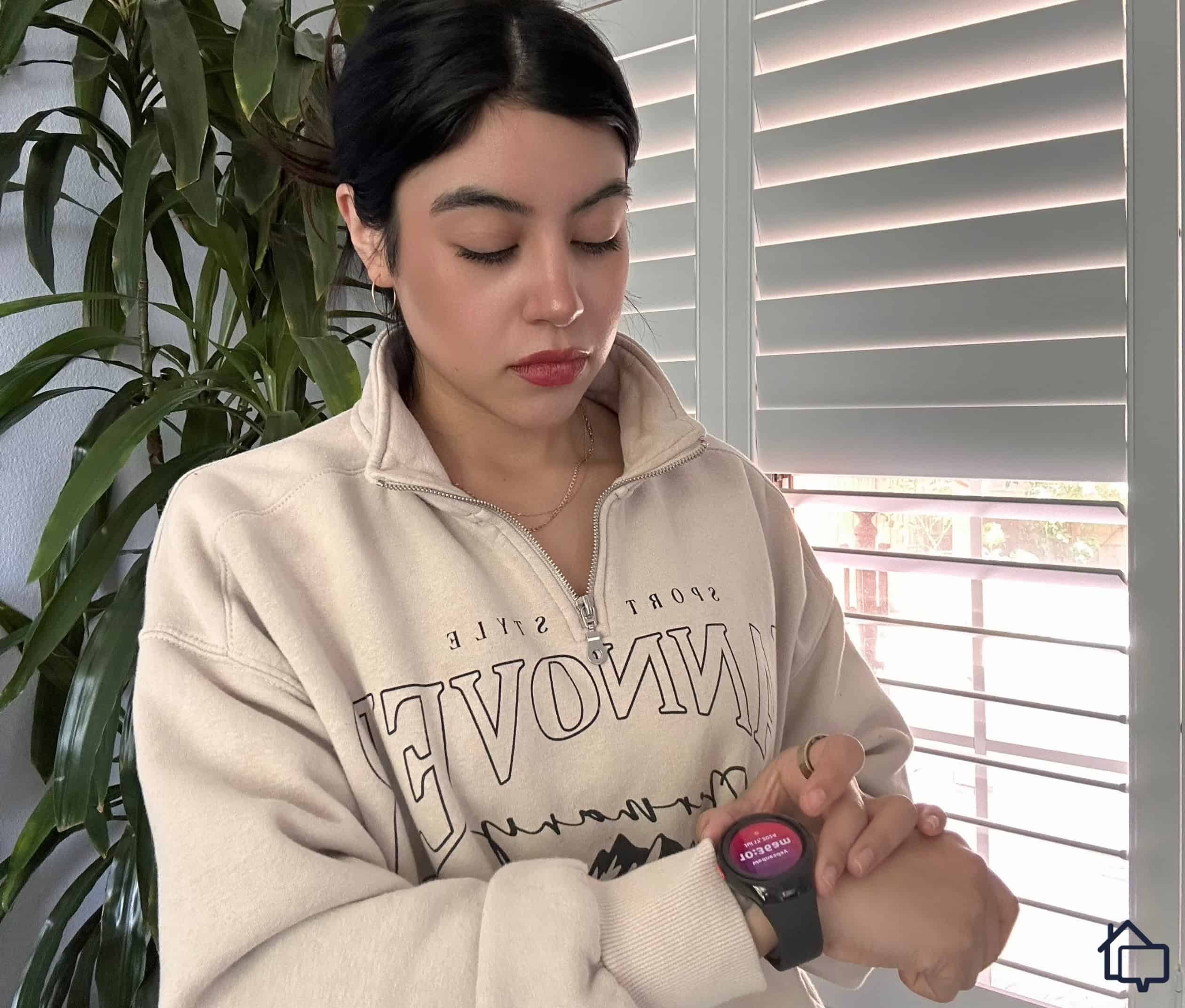MobileHelp Medical Alert System Pricing and Full Review – 2025 Recommendations
At $49.95 per month, the MobileHelp Duo is one of the most affordable at-home and mobile bundles on the market.
SafeHome.org may receive compensation from some providers listed on this page. Learn More
We may receive compensation from some providers listed on this page. Learn More
At $49.95 per month, the MobileHelp Duo is one of the most affordable at-home and mobile bundles on the market.
MobileHelp is a provider of affordable medical alert systems. They offer an at-home and mobile bundle starting at $44.95 per month; you’re essentially getting two medical alert systems for the price of one. But of course, it’s not just about price. We wanted to see if it performs well, so we purchased our own MobileHelp system to find out.
We tested MobileHelp for almost a month, assessing everything from how quickly they respond to alarms and the quality of their equipment. We’ll share everything we learned, including how MobileHelp compares with the best medical alert systems we’ve tested. And of course, we’ll help you pick the right MobileHelp package if you decide it’s the best system for you. One thing’s for sure: it’s one of the most affordable medical alert systems you can buy.
Check out more recommendations from the SafeHome team:
MobileHelp’s packages start at $24.95 per month for the Classic Landline. That’s slightly higher than Medical Alert’s pricing, which starts at $19.95 per month.
Where MobileHelp stands out is with the bundles. The Home Duo bundle includes a Classic Cellular at-home system (typically $34.95 per month) and a Micro mobile system (typically $34.95 per month) for only $44.95 monthly. You’re essentially saving $25 per month just by buying together an at-home and mobile system.
The Home Duo bundle is the MobileHelp package we recommend the most, but here’s a look at the other available options.
| MobileHelp At-Home Systems | Classic Landline | Classic Cellular |
|---|---|---|
| Application | Home use only | Home use only |
| Help button range | 600 feet | 1,400 feet |
| Communication | Landline | Cellular (AT&T) |
| Monthly cost | $24.95 | $34.95 |
We recommend the MobileHelp Classic systems to older adults who spend most of their time at home.
At $34.95 per month and with zero upfront equipment fees, the Classic Cellular is the better option overall between the two. Cellular networks are more reliable than landlines, and on top of that, the Classic Cellular has a 1,400-foot range compared to the Classic Landline’s 600 feet. The longer range would allow you to roam more freely around the house and continue to do activities you enjoy such as gardening.
Expert Insight: A 1,400-foot range is considered industry-best. Medical Guardian’s MGHome Cellular made our list of the best long-range medical alert systems specifically because of its 1,400-foot range.
| MobileHelp At-Home Systems | Solo | Micro |
|---|---|---|
| Application | Home or on-the-go | Home or on-the-go |
| Configuration | Mobile base unit + help button | All-in-one mobile unit |
| Monthly Cost | $34.95 | $34.95 |
Both mobile systems from MobileHelp cost $34.95 per month, but they work differently. Overall, we’d recommend the Micro system over the Solo system.
The reason is that MobileHelp Micro’s device is all-in-one. It contains the help button, microphones and speakers, and the cellular and GPS chips required for communication and location tracking. All those features are packed in a device that weighs about 1.8 ounces – we barely felt it hanging around our necks.

A pair of MobileHelp Micro pendants with built-in two-way voice, GPS, and cellular
In contrast, the MobileHelp Solo system consists of 2 devices – a mobile base unit and a wearable pendant. The mobile base unit offers the same features as the Micro all-in-one device, but it’s slightly bulkier and heavier. It’s also designed to sit on its cradle when at home, which we didn’t find intuitive. We had to switch between the wearable pendant and the base unit when coming or leaving the house.
>> Other Options: The Best Mobile Medical Alert Systems We Tested in 2025
Senior Care Tip: Spending time outdoors can help older adults boost their physical and mental health. It can also improve memory and energy levels, with seniors reporting a 20 percent increase in attention span after just an hour of staying outdoors.1
| MobileHelp Bundles | Home Duo Bundle | Mobile Duo Bundle |
|---|---|---|
| Inclusion 1 | Classic Cellular (at-home system) | Micro (mobile system) |
| Inclusion 2 | Micro (mobile system) | Micro (mobile system) |
| Application | Individual home + mobile use | Mobile systems for spouses |
| Monthly cost | $44.95 | $49.95 |
MobileHelp’s two available bundles are for different uses. We recommend the Home Duo bundle to individuals who want separate at-home and on-the-go systems, while the Mobile Duo bundle was designed for spouses who want to enjoy protection for the price of one system.

Inclusions of a MobileHelp Home Duo bundle
From Our Experts: The Mobile Duo bundle is great for couples who want a mobile medical alert system, but if you’re looking to save more money and only need protection at home, we recommend Bay Alarm’s packages. They offer free spousal monitoring – just buy a second help button.
MobileHelp also offers add-ons to improve your medical alert system’s functionality, and some you can even get for free or at a discount.
| Add-ons | Cost |
|---|---|
| Fall detection | $5.50 per month ($11/mo. regular price) |
| Lock box | $2.99 per month (free with annual plan) |
| OnGuard Alerts | $2.99 per month |
We recommend getting at least fall detection, which costs $5.50 per month in the first billing cycle after discounts. It costs $11 per month, typically. Fall detection is particularly useful for mobile units designed for outdoor use, because of external hazards such as uneven sidewalks and slippery surfaces.2 It comes in handy for at-home systems, especially if the wearer already has mobility problems or is frail.3
In our experience with the MobileHelp Micro, fall detection works well. We ran controlled simulations, and it detected the fall eight times out of 10. This is on par with the best medical alert systems with fall detection.
FYI: We’re disappointed that MobileHelp’s Classic Landline doesn’t support fall detection, although that’s common at-home landline systems. When we reviewed ADT’s medical alert systems, the Medical Alert Basic also didn’t give us the option to add fall detection.
We also recommend getting a lock box, whether you’re buying an at-home or mobile system. It costs an extra $2.99 per month, but you can get it for free with any package or bundle simply by opting to pay annually.
A lock box lets you safely store spare keys to let emergency responders in during emergencies. MobileHelp will keep the lock box combination on file and then relay it to responders during emergencies.
Lock boxes are standard medical alert system add-ons, and MobileHelp’s $2.99-per-month price is the average cost. When we tested the MGMini by Medical Guardian, they also offered us a lock box for $2.99 per month.
Another add-on we recommend is OnGuard Alerts, which is also $2.99. We recommend it to older adults who might need a little more help and support from caregivers and family members.
Essentially, this add-on lets your contacts know when you’re in an emergency situation through texts and emails. It also gives you and your family access to a portal where you can manage emergency contact preferences. When we signed up for OnGuard Alerts, we were able to easily add three of our closest family members to the list, and they got alerted every time we pressed the help buttons on any of our MobileHelp systems.
We got to test several of MobileHelp’s products, including the MobileHelp Home Duo bundle (which includes the Classic Cellular and Micro systems) and the MobileHelp Solo mobile system.

Our tester holding the MobileHelp Solo mobile base unit to test its responsiveness
We canvassed MobileHelp’s packages online, but we recommend getting a quote from the company itself. That way, they can help you pick out the best solution.
When initially requested a quote for the MobileHelp Solo, but the agent we spoke with recommended the Home Duo bundle instead after assessing how we wanted to use it. We accepted their suggestion and got the Home Duo bundle, but still pushed through with our purchase of a Solo system.
After that, we finished up the sale and arranged shipping. We handled the shipping cost, but it was only $12.50 for each system – a small price to pay considering MobileHelp doesn’t charge equipment fees.
Expert Insight: Equipment fees can cost hundreds of dollars, and some companies charge an activation fee. The MGMini by Medical Guardian, for example, requires a one-time $149.95 equipment fee plus a $12.50 shipping fee.
Our two orders arrived at our doorstep a few days later, and we got to installing them immediately. It didn’t take more than 10 minutes.
We simply plugged in both base stations – the Classic Cellular base station and the charging cradle for the Solo base unit. Then, we put on the pendants, turned on the systems, and voila!
We ran a quick test for the Classic Cellular system as instructed by the manual, and after hearing “user auto test completed,” we knew we’d properly set it up. Next, we tested the Micro and Solo mobile units. It wasn’t automated; we had to hold down the help buttons and speak with the monitoring center. They answered the call and asked if we needed help. After we told them we were just running a test, the agent informed us that the systems are working properly.
Pro Tip: We also recommend testing the range of your Classic Cellular or Classic Landline system. Follow the manual to enter the “test” mode, and then walk around the house with your alert pendant to see how far you can go without the button disconnecting from the base station.
Throughout the course of our hands-on MobileHelp testing, we ran several emergency simulations. As mentioned earlier, our MobileHelp Micro unit detected eight out of 10 simulated falls.
On top of that, MobileHelp’s emergency response time was good. We timed how long the three systems took to connect us to MobileHelp’s monitoring center, and these were their averages:
As you can see, MobileHelp’s response was pretty consistent. We would have preferred it a little faster – maybe as fast as the Bay Alarm Medical SOS Smartwatch we tested, which averaged 16 seconds. But averaging 30 seconds is not bad. We’ve tested systems that made us wait over a minute to get a live response from the monitoring center.
Testing the MobileHelp systems for almost a month has also allowed us to see how well their batteries perform.
With the Classic Cellular, our pendant never ran out of charge. The manual says it can run for five years without needing battery replacements. The base unit also comes with a battery backup of up to 30 hours, and indeed, it stayed on for about 28 hours after we unplugged it.
With the Micro pendant, the battery life was give or take five days. That’s not bad considering the MGMini from Medical Guardian had the same longevity, and that the SOS Micro from Bay Alarm lasted only one and a half days on a single charge. Fully charging the MobileHelp Micro took about three hours, but it was safe to leave it on its charging cradle overnight.
The MobileHelp Solo wasn’t as impressive, though. We had to put the base station on its charging cradle after a full day outside. This is why it requires users to switch from carrying the base station when outside to using the pendant when inside the house.
>> Related: The Best Medical Alert System with GPS
We also tested how well MobileHelp’s help buttons function in the shower. All their wearable buttons are water-resistant, and we’ve confirmed that wearing them while taking a shower doesn’t disrupt their functionality. However, the mobile units with speakers – the Solo and Micro – aren’t fully waterproof. You can’t take them in the bath.
The only ones you wear in the bath and submerge in water are the button-only wearables. Fortunately, that includes the fall detection pendant. According to studies, falls in the bathroom are more likely to cause serious outcomes than falls anywhere in the house.4 It’s great to know MobileHelp keeps users covered even in the bathroom.
Overall, we think MobileHelp is a solid medical alert system brand, but we can’t help but notice one key drawback compared to its competitors – its limited equipment options.
Let’s start with equipment options. When we tested Medical Guardian, one of our favorites was the MGMove medical alert smartwatch. Bay Alarm had the exact same smartwatch, too. Both made our list of the best medical alert watches. Unfortunately, MobileHelp doesn’t offer a product to match. The only MobileHelp devices you can wear around your wrist are their pendants that – let’s face it – aren’t as stylish or as useful.
With that being said, we recommend Bay Alarm Medical or Medical Guardian more to active seniors. You can read our Bay Alarm review, which discusses the SOS Smartwatch, or our dedicated MGMove review to learn more.

Many of MobileHelp’s competitors, including Medical Guardian, now offer medical alert watches
On top of that, MobileHelp doesn’t offer wall-mounted help buttons, like the ones we saw when we tested Life Alert. This is a key consideration if you’re planning to buy the Micro all-in-one unit. Wall-mounted help buttons can be useful in the bathroom; mount them somewhere near floor level, and you can ask for help in case you fall down. With the Micro device not fully waterproof, a wall-mounted help button would have been nice to have as an option.
On the bright side, though, MobileHelp’s edge comes from its low prices on bundles. We like that it’s contract-free, and that unlike Medical Guardian and Bay Alarm, it doesn’t charge equipment fees. Just pay the first month of monitoring and shipping fee, and you’re good to go. So if you’re looking for an affordable medical alert system and you have no need for the missing options mentioned above, it’s one of the best options.
It’s always our goal to assess medical alert systems based on first-hand experience. This means buying the system – or systems – ourselves and testing them for weeks to come up with helpful and honest recommendations.
In testing MobileHelp, we focused on three key areas:
After almost a month of living with MobileHelp systems, our experts put together this review to offer insights and recommendations based on everything we learned.
There’s no denying that MobileHelp’s biggest upside is the cost. It’s one of the more affordable medical alert systems we’ve tested, and it’s flexible because it doesn’t require contracts, nor does it need an upfront equipment fee. It’s great for older adults looking for a simple medical alert system to use without breaking the bank.
That said, limited equipment and add-on options might hold you back from buying a medical alert system from MobileHelp. After all, most seniors want a system they can tailor to their needs. MobileHelp just doesn’t offer enough options to allow full customization.
Our recommendation is to take a look at our Medical Guardian review. While it’s slightly pricier than MobileHelp, Medical Guardian is more well-rounded. It also doesn’t require contracts, and it offers way more features and technology, including a useful caregiver app.
Yes, most MobileHelp systems support fall detection, but you need to buy it as an add-on. It costs $11 per month, but is often discounted. Take note that the Classic Landline doesn’t support fall detection at all.
All of MobileHelp’s emergency pendants are waterproof, but the mobile units are only water-resistant. We’ve confirmed in our test that the Micro and Solo devices can work in the shower, but not fully-submerged in the bath.
MobileHelp’s Classic Landline system requires a working landline, but the Classic Cellular and the mobile systems don’t require a phone line. They use the AT&T network, and access to the network is included in the monthly fee.
Yes, MobileHelp mobile systems have GPS. When pressed to call for help, the Micro and Solo devices will ping the monitoring center with GPS coordinates. They can further use nearby cellular towers to help the monitoring center triangulate their real-time location.
All MobileHelp systems are contract-free. This means you can cancel anytime, and you won’t have to pay a cancellation fee.
West Hartford Health. (2022). Why Older Adults Should Spend Time Outdoors.
https://westhartfordhealth.com/news/senior-health/spend-time-outdoors/
National Library of Medicine. (2006). Outdoor Falls Among Middle-Aged and Older Adults: A Neglected Public Health Problem.
https://pmc.ncbi.nlm.nih.gov/articles/PMC1483851/
National Library of Medicine. (2010). Indoor and Outdoor Falls in Older Adults are Different: The MOBILIZE Boston Study.
https://pmc.ncbi.nlm.nih.gov/articles/PMC2975756/